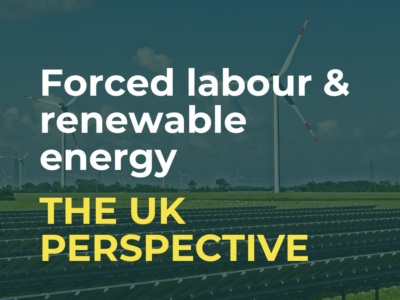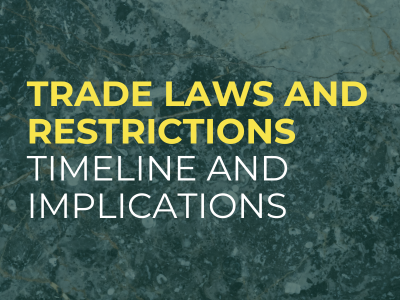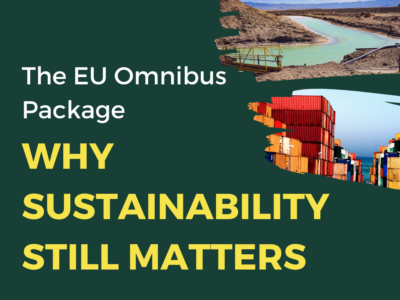
Forced labour and renewable energy | The UK perspective
What changes have been announced to the Great British Energy Bill?
The Great British Energy Bill was introduced in UK Parliament on 25 July 2024 to establish Great British Energy as a publicly owned and operationally independent energy company. The Bill provides the statutory foundations required to deliver the UK government’s clean energy ambitions, boosting investment in renewables to help meet net zero goals.
On 23 April 2025 it was announced that Energy Secretary Ed Miliband would reverse the Labour party’s previous resistance to rewriting the Bill to address forced labour in renewable energy supply chains. An amendment will now be included within the Bill requiring that financial assistance is not provided if evidence of modern slavery exists in the supply chains of projects supported by Great British Energy. The final wording of the legislation will need to be agreed by both UK houses of parliament before it becomes law.
While this change only applies to Great British Energy – not to private sector operators building their own solar or wind farms – it signals a new intention from the UK government to take a global leadership position on forced labour in critical mineral supply chains.
Forced labour and renewable energy
When it comes to solar, more than 80% of the world’s solar panels are produced by China, and the scale of Chinese development in the industry has helped push the price of solar panels down by 90% in the last decade. 35% of the world’s solar-grade supply of polysilicon, is produced in the Chinese region of Xinjiang, where the Muslim Uyghur population has been subject to arbitrary detention and forced labour. Research carried out in 2023 was instrumental in raising broader global awareness of the difficulties in avoiding forced-labour tainted raw materials and manufactured goods when being sourced from the Uyghur Region. This work alongside other reports, has been vital in raising awareness of supply chain risks and driving improvements in Environmental, Social and Governance (ESG) and traceability performance in the solar industry.
The solar industry isn’t the only part of the renewables sector blighted by allegations of forced labour. In wind supply chains, balsa wood, copper and manganese have been flagged as particular areas of concern when it comes to substandard labour conditions. Renewable energy is just one of many end users for these affected materials. However, the World Bank has estimated that there will be a 250% rise in demand for key minerals used in wind turbines under climate scenarios in which global temperatures are kept to within 2°C of warming. This includes up to 4.7 tonnes of copper in a single wind turbine.
Practical steps for the responsible sourcing of renewable energy
The UK government has set a target of achieving a fully decarbonised power system by 2035 composed predominantly of wind and solar. It aims to achieve 70 gigawatts (GW) of solar power by 2035 which is more than four times the 2024 output of 15.8 GW. These ambitions require huge investment in renewable energy sources. What steps companies and government take to ensure that these ambitions can be achieved while ensuring that materials are not sourced from areas where forced labour is used?
Engagement with industry-led programmes and responsible sourcing standards can provide an effective approach to enhancing transparency and sustainability in supply chains:
> In the case of solar, the Solar Stewardship Initiative (SSI), set up by SolarPower Europe and Solar Energy UK, became fully operational in 2023, with the aim of enhancing supply chain transparency and strengthening confidence in how, where, and by whom, products are manufactured in the solar supply chain. Through its ESG and Traceability Standards, the SSI carries out audits on companies in the solar supply chain and identifies whether evidence of forced labour exists. In a statement released last Wednesday, the SSI said it welcomed the amendment to the UK Energy Bill.
> In terms of wind energy, the Global Wind Energy Council represents the wind industry. The GWEC Wind Sustainability Initiative is working to establish global standards for responsible sourcing and procurement of wind turbines.
Developing a deep understanding of your product supply chains is essential in understanding your level of exposure to risks such as forced labour. Carrying out a detailed supply chain mapping exercise is an essential first step in understanding the materials that exist in your supply chain, who your tier one suppliers are (and who supplies them – your tier 2 and tier 3 suppliers) and the risks associated with the sourcing of those materials.
When it comes to identifying whether the polysilicon in your supply chains originates from the Uyghur Region, an enhanced due diligence strategy that delves deeper into your suppliers, is essential. This could include detailed desk-based research or digital supply chain mapping exercises, as well as identifying whether your suppliers have been audited against voluntary industry standards, such as the Solar Stewardship Initiative’s ESG and Traceability Standard.
The solar sector’s rapidly evolving ESG and traceability performance means that governments, institutions, investors, and NGOs must rely on recent data (i.e. no more than 12 months’ old), recognise companies’ publicly available policy management procedures, and constantly triangulate the various sources of data on risks in their solar supply chains.
Unsure where to start? Get in touch with TDi for more information and a free consultation on how to identify and mitigate the risks in your supply chain.
More information:
Read TDi’s Material Change for Renewables report which provides resources for producers and purchasers of clean energy technology to meet the challenges of responsible sourcing for the clean energy transition. You can also watch our webinar on the subject.



